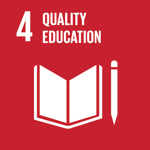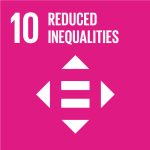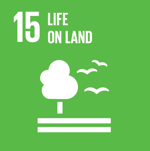Innovation Network for a climate-resilient Gran Chaco
 Argentina
Argentina
 Bolivia
Bolivia
 Paraguay
Paraguay
Executive Summary
The Gran Chaco covers an area of approximately 1,014,000 km2 and represents the second largest forested region in Latin America after the Amazon rainforest. The impact caused by the increase in extreme weather events affects families, whose subsistence largely depends on resources from the native forest. The objective of The Innovation Network for a Climate-Resilient Gran Chaco is to coordinate the regional programs REDLAC (INTA - INIAF - IPTA) and Gran Chaco PROADAPT (groups the NGO) as an innovation network for the development of family agriculture in the Gran Chaco in the context of climate change. Based on participatory planning workshops, the project's Trinational Committee coordinated its three components Innovation, Coordination, Management and Monitoring, and GCyC, and in particular the activities of the Beekeeping teams, Minor Ruminants - mainly goats, Silkworm, and Meteorology.
Focused on the generation of “Climate-Smart Systems”, one of the tools that yields results are the Demonstration Units. These aim to initiate a continuous process of adjusting the technological path to the territory and to be an innovation tool, where organizations and their producers, based on a large R & D & I team, achieve the “collective way of innovating”. With a total of 19 Beekeeping Demonstration Units, 4 Minor Ruminant Modules, 1 Silkworm Demonstration Unit, and 6 Technological Validation Pilot Sites, it contributes to the adjustment of the technological path as a tool for socialization and development. Using these tools, we manage to revalue local knowledge, based on R + D + i knowledge.
The technological solution
The contribution to the formation of public-private work networks between INTA, INIAF, IPTA and the NGOs of Gran Chaco Proadapt is the main socio-technical solution that made it possible to surpass the project objectives, uniting the R&D&I teams with the organizations and producers of the Gran Chaco. The Gran Chaco Caprine Network was created, uniting INTA and Gran Chaco Proadapt teams, in the same way that the beekeeping team led by INTA-PROAPI, and the Silkworm team were integrated. Protocols were generated and technological paths were adjusted using the Beekeeping, Minor Ruminants, and Silkworms Demonstration Units as reference sites where technological solutions adapted to the territory and extension tools were generated. Contributions were made to the consolidation of the trinational network of Argentina, Bolivia, and Paraguay meteorological stations managed by Gran Chaco Proadapt.
Knowledge Management is a component of great importance in the Networks, highlighting the systematization of the information generated such as information visualization, the creation of an internal exchange and work site for a team with members from 3 countries, and the generation of on-line proposals in response to training needs with great interaction between virtual content and the territory.
Results
The incorporation of new organizations and HR to the Network made it possible to strengthen work teams and form new work networks such as the Gran Chaco Caprine Network. The Great Arid Chaco, the minor Ruminants - Goats and Sheep, and Silkworms were incorporated into the work strategy. The technological path was adjusted based on contributions from 19 Beekeeping Demonstration Units (DU), achieving an income/cost ratio of 2.9 in 2021 vs 1.23 in 2018 (diff 236%) with yields in the same period of 30 kg / col and 15 kg / col. In addition, there are 6 Goat Units and 1 Silkworm Units adjusting the technological path with the help of 7 Technology Validation Pilot Sites. 2 peer-reviewed articles were produced, as well as publications and presentations at national and international congresses. The trinational meteorological network, the warning system, and the Bermejo-Pilcomayo River Risk Maps, managed by Gran Chaco Proadapt, indirectly benefited more than 80,000 people facing the risk of flooding. Beekeeping information display systems were strengthened. The remote beekeeping MOOC, through its two editions, exceeded 40,000 registrants from 50 countries, and contributed to the Bachelor's Degree in Beekeeping of 38 future graduates.
Beneficiaries
The direct beneficiaries of this project are 6,600 trained people, 125 organizations and institutions directly linked to the program, and 81 technicians, researchers, and communicators from the RedLac and Gran Chaco Proadapt teams.
Indirectly benefited more than 138,000 people, including producers, technicians, consumers, and decision-makers at the sectoral level based on the information or tools generated. The 43,000 beekeepers trained by the beekeeping MOOCs stand out, as well as the 80,000 people who take advantage of the collaborative model of monitoring and early warning against flood risks of the Rio Bermejo and Pilcomayo.
Sustainable Development Goals









Project news
Participating Organizations
Executor
- Fundación ArgenINTA (ARGENINTA) - Argentina
Co-executor
- Instituto Nacional de Innovación Agropecuaria y Forestal (INIAF) - Bolivia
- Instituto Paraguayo de Tecnología Agraria (IPTA) - Paraguay
- Instituto Nacional de Tecnología Agropecuaria (INTA) - Argentina
Associated
- Fundación Avina (AVINA) - Argentina
- Asociación Cultural para el Desarrollo Integral (ACDI) - Argentina
Graphics and data
Financing by country (in USD)






















































